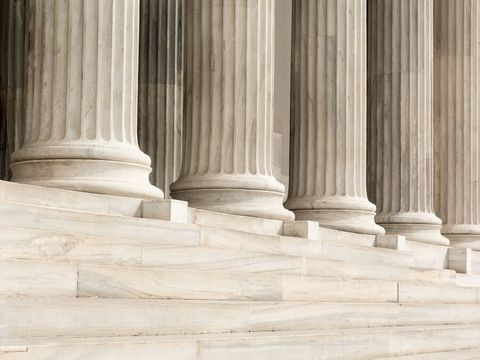FAR Council Withdraws Proposed Mandatory Climate Disclosures for Federal Contractor Rule
Client Alert | 1 min read | 01.10.25
Mandatory climate disclosures for US federal contractors are officially off the table—at least, for the foreseeable future. On January 10, 2025, the Department of Defense, General Services Administration, and National Aeronautics and Space Administration announced that they are withdrawing a proposed rule, “Disclosure of Greenhouse Gas Emissions and Climate-Related Financial Risk,” which would have required thousands of federal contractors to inventory and publicly disclose their Scope 1 and Scope 2 greenhouse gas (GHG) emissions and would also have required “major” contractors to also establish and validate GHG emission-reduction targets tailored to the goals of the Paris Agreement. The proposed rule, discussed in further detail here, was introduced in November 2022 and resulted in thousands of public comments from the government contractor community and beyond.
The withdrawal notice explains that the agencies lacked sufficient time during the current administration to finalize the proposed rule “particularly given the large volume of public comments and the policy issues they raised” and that “[t]he agencies’ overall analysis of public comments indicates evolving practices and use of standards in industry, and since the publication of the proposed rule, differing domestic and international regulations covering greenhouse gas disclosures have been created.”
Following withdrawal of the proposed rule, there is no uniform, government-wide obligation to disclose GHG emissions and reduction targets for purposes of obtaining federal contracts. However, government contractors should still carefully scrutinize their contracts for bespoke climate-related requests, as they would for any other non-standard contract term.
Contacts
Insights
Client Alert | 5 min read | 12.12.25
Eleventh Circuit Hears Argument on False Claims Act Qui Tam Constitutionality
On the morning of December 12, 2025, the Eleventh Circuit heard argument in United States ex rel. Zafirov v. Florida Medical Associates, LLC, et al., No. 24-13581 (11th Cir. 2025). This case concerns the constitutionality of the False Claims Act (FCA) qui tam provisions and a groundbreaking September 2024 opinion in which the United States District Court for the Middle District of Florida held that the FCA’s qui tam provisions were unconstitutional under Article II. See United States ex rel. Zafirov v. Fla. Med. Assocs., LLC, 751 F. Supp. 3d 1293 (M.D. Fla. 2024). That decision, penned by District Judge Kathryn Kimball Mizelle, was the first success story for a legal theory that has been gaining steam ever since Justices Thomas, Barrett, and Kavanaugh indicated they would be willing to consider arguments about the constitutionality of the qui tam provisions in U.S. ex rel. Polansky v. Exec. Health Res., 599 U.S. 419 (2023). In her opinion, Judge Mizelle held (1) qui tam relators are officers of the U.S. who must be appointed under the Appointments Clause; and (2) historical practice treating qui tam and similar relators as less than “officers” for constitutional purposes was not enough to save the qui tam provisions from the fundamental Article II infirmity the court identified. That ruling was appealed and, after full briefing, including by the government and a bevy of amici, the litigants stepped up to the plate this morning for oral argument.
Client Alert | 8 min read | 12.11.25
Director Squires Revamps the Workings of the U.S. Patent Office
Client Alert | 8 min read | 12.10.25
Creativity You Can Use: CJEU Clarifies Copyright for Applied Art
Client Alert | 4 min read | 12.10.25
Federal Court Strikes Down Interior Order Suspending Wind Energy Development






